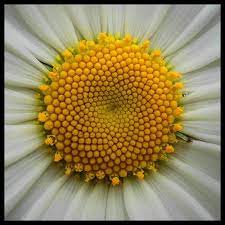INTRODUCTION
I was scrolling through my regular YT feed and realized, it's November 23rd, or
THE FIBONACCI DAY
Well to the bunch of you who do not know who Fibonacci is, well you might have at the least heard of Fibonacci Numbers (0, 1, 1, 2, 3, 5, 8, 13, 21, 34, 55, 89).
These famous sequence of numbers were first introduced in Indian Mathematics as early as 200 BC in work by Pingala(a sanskrit poet) on enumerating patters of sanskrit poetry formed from syllables of two lengths.
The name Fibonacci came from, well Leonardo Bonacci or Fibonacci, who introduced these sequence in Western European Mathematics in 1202.
Anyway, if you haven't guessed it, we celebrate Fibonacci Day on this day because if you look at this day in the American date format then it says 11/23. Get it, 1123, the Fibonacci Sequence.
CODING
Well this is what I yearn for the most, anyway let's start with printing the basic Fibonacci Sequence in python.
If you are a developer or are like pursuing a computer science related degree or are a student then you know this by heart, but for some rare cases, I'll just type it out here,
Well luckily i can display code like this now, but you can still find the code(if you need any) in my github repo here.
Anyway, the fibonacci sequence has a lot of uses and can also be seen occurring in natural geometry all around us, it truly is a beautiful series of numbers.
VISUALIZING FIBONACCI SEQUENCE
So, most of my blogs so far have been about visualizing stuff, so I wanted to continue the tradition and just do that again honoring the Fibonacci.
I headed towards the turtle and coded the basic and the most used fibonacci visualization diagram, the FIBONACCI SPIRAL.
To be completely honest, I thought this was going to be a bit tougher , but I literally had to add just two lines to visualize the fibonacci code from above.
The code looks something like this:
And the output looks something like:
Let's look at FIBONACCI SQUARES.
I went to turtle again and coded this:
Well the output was something like this:
Well you could see the the sequence in this diagram.
Well enough of turtle, let's go about adding fibonacci into music.
MAKING MUSIC WITH FIBONACCI
Music is really diverse, and the specialty of music is that it involves a lot of math somewhere or the other.
For those who do not know, I am a huge music enthusiast and know a thing or two about music production.
Well, how do we go about applying the fibonacci in music, well this person applies the fibonacci sequence into a series of konnakol polymeters, you can watch this video here.
It's amazing what people could do with music
I really wanted to produce something with the fibonacci sequence but i couldn't find an inspiring enough melody motif to work with.
Well while we talk about motif, let's talk about the motif of this blog.
THE GOLDEN RATIO
If you divide a number from the fibonacci sequence with the previous number in the sequence, the result is 1.1618, and it is true for all the numbers in the sequence.
This is what mathematicians named as the golden ratio or PHI. There is a running meme around all the math people that ANYTHING can be drawn using the golden ratio spiral, and it does work sometimes.
You can see the golden ratio popping up in nature everywhere, let's talk about one of the case.
In nature, if you look at flowers, it would try to maximize the number of seeds to spread so that the flower could pollinate efficiently, so the nature uses the golden ratio in such a way that the seeds are spread efficiently, this is called phyllotaxis and this concept is incredible.
You can watch the numberphile video explaining phyllotaxis here.
Let's try to visualize this in python turtle again:
This is how it looks like:
It's crazy how we tend to find order everywhere we go and see, but this is something truly incredible and pretty, no wonder it is named the GOLDEN RATIO.
But hey, I successfully completed a blog without the use of javascript canvas, and I have started liking turtle better for visualization.
Anyway, I hope you had a good read, see you next time.
Goodbye.






oh this is so cool! i really like how you have discussed several aspects of it and using the visualer too!
ReplyDelete